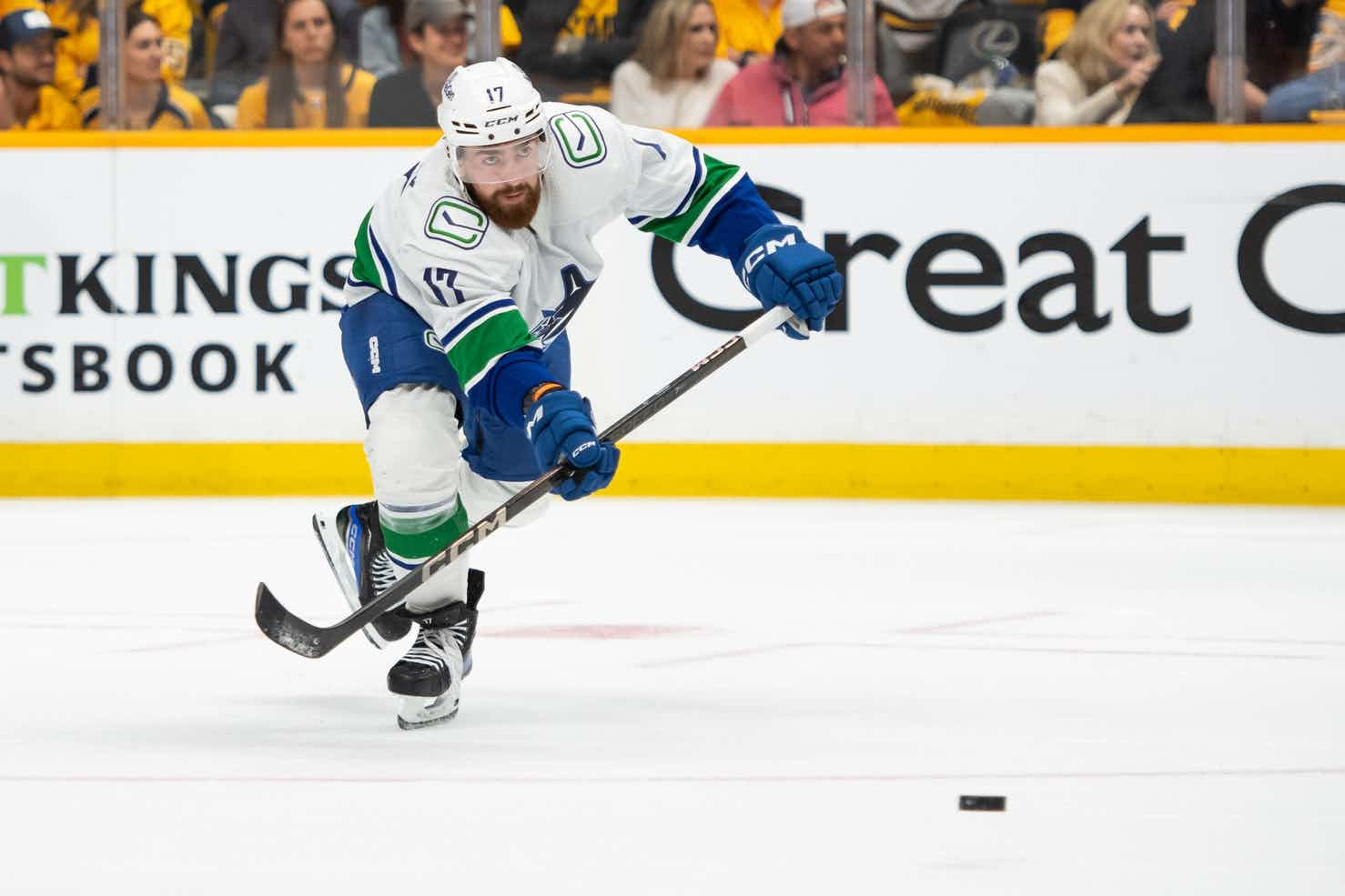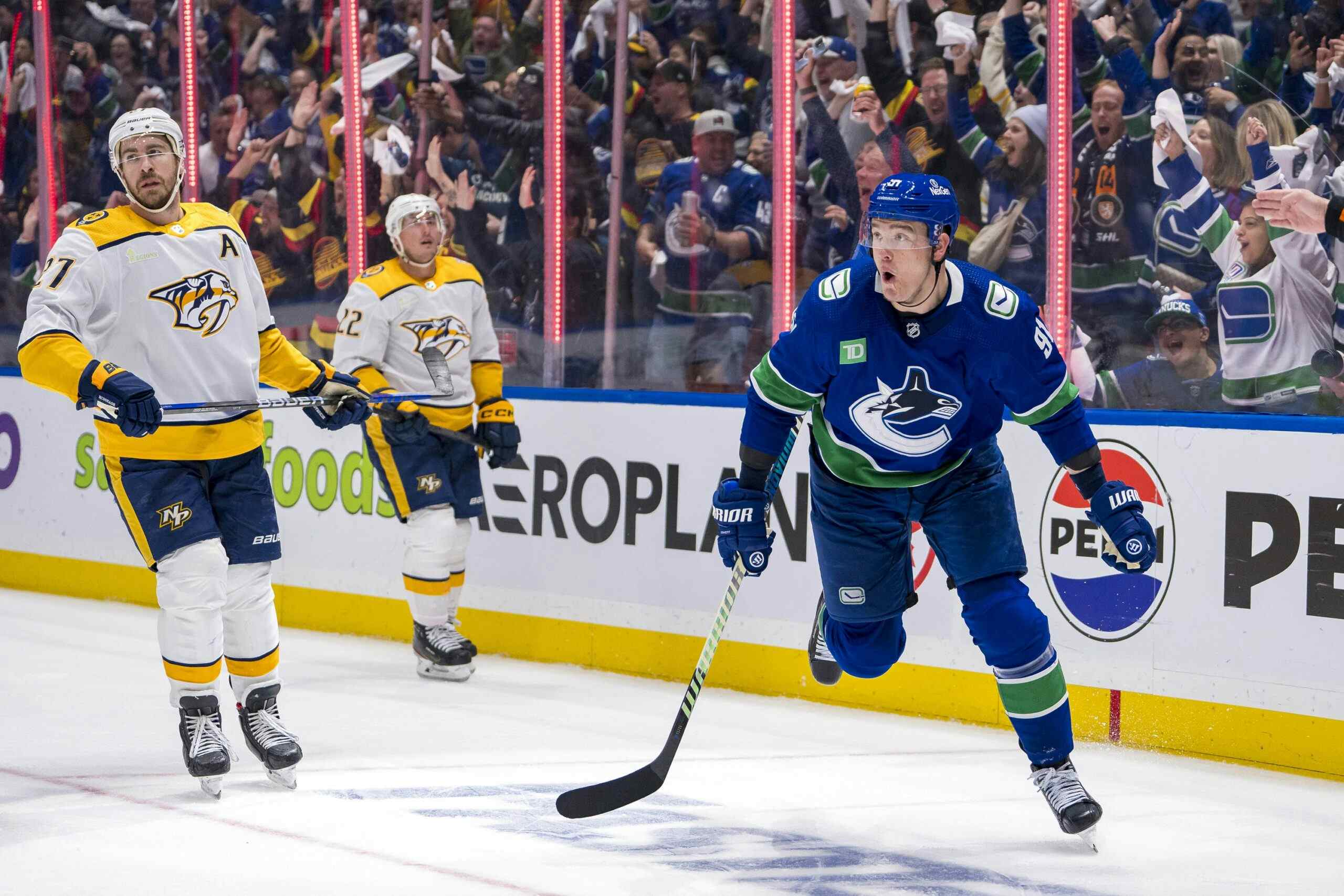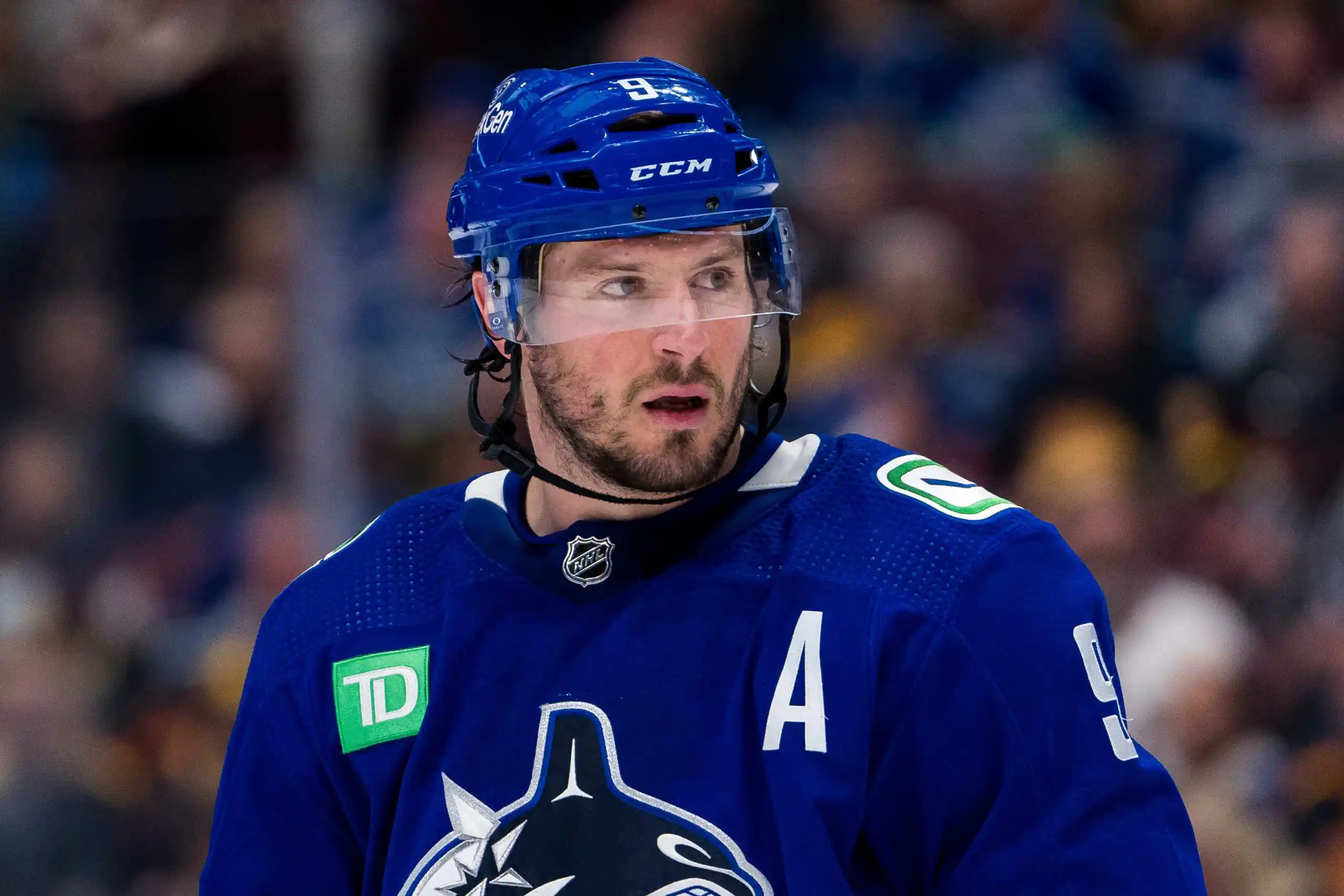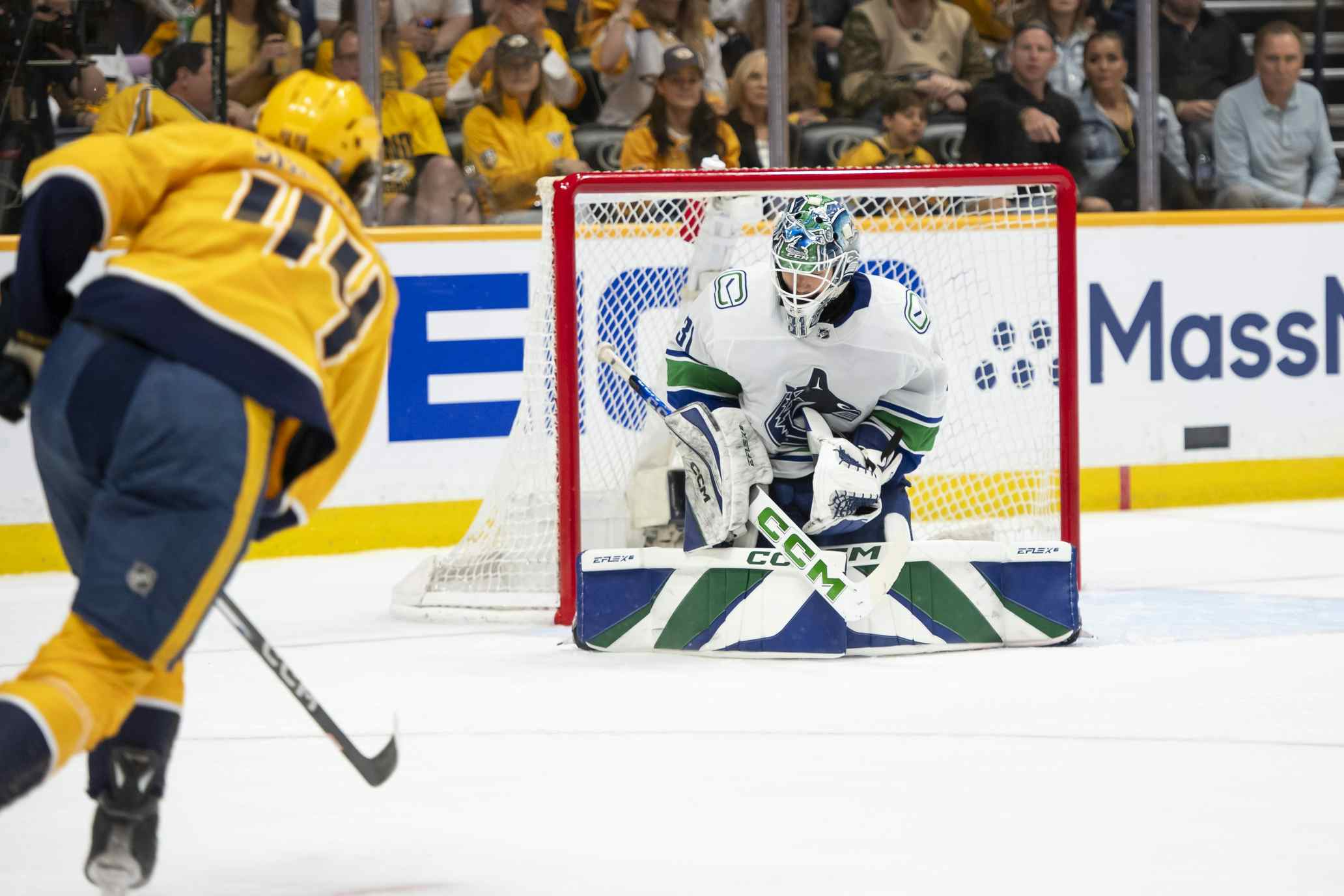Preparing for the Wild: How the Canucks’ team defence and top four stack up against Minnesota’s
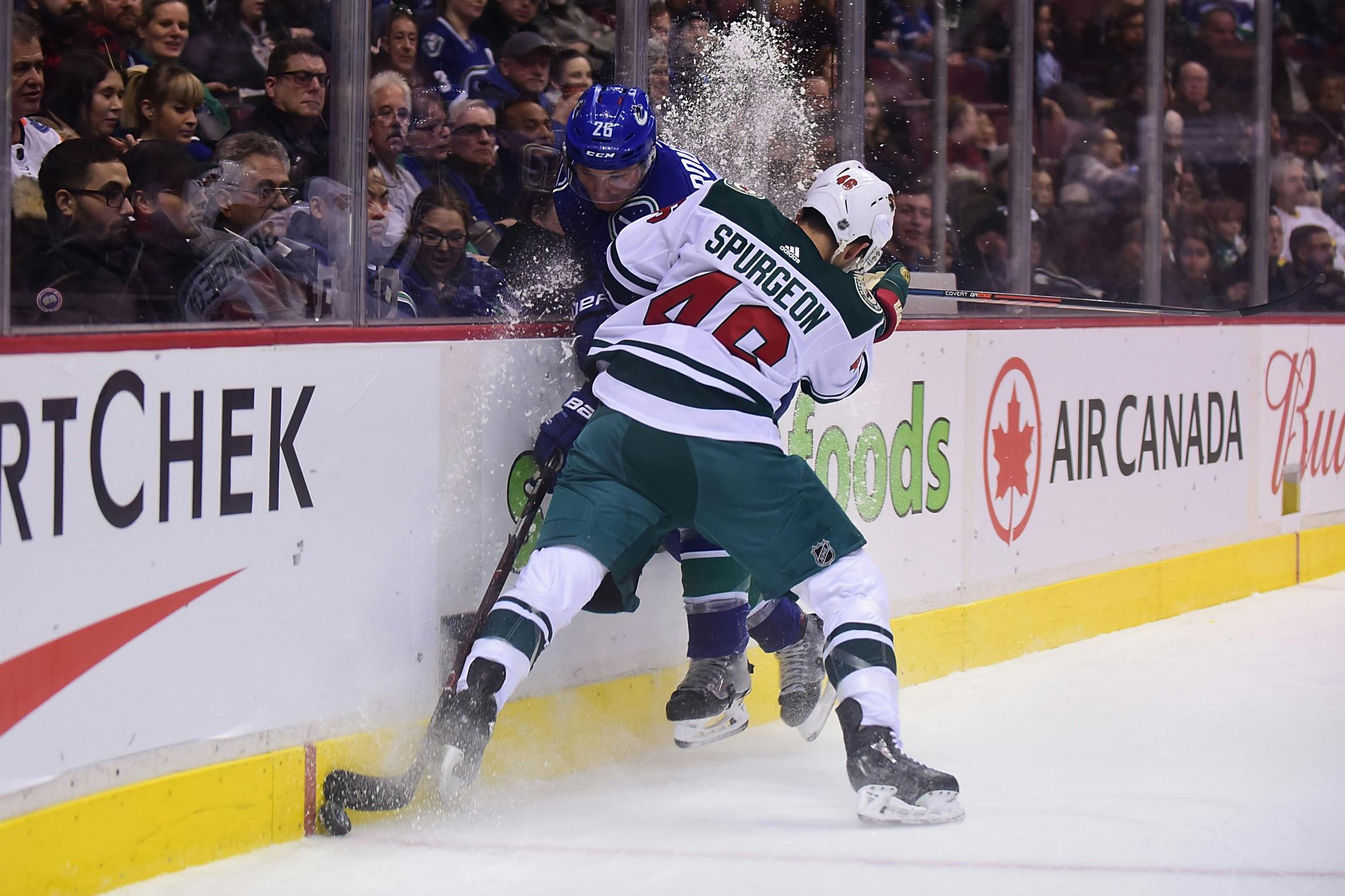
We don’t know exactly when, and we don’t quite know how or where, but we do know that if and whenever the Vancouver Canucks return to action in 2020, they’ll do so via a five-game play-in series against the Minnesota Wild — with the winner moving on to face the Colorado Avalanche in what we’ll have to call the 1.5th Round of the Stanley Cup Playoffs.
It’s been 17 years since the Canucks last met the Wild in the postseason, but the less said about that, the better. The Managing Editor of this site, David Quadrelli, kicked off the series with a look at what head coach Travis Green may plan to do when it comes to deploying Elias Pettersson against the Wild.
We’re going to focus on how the Canucks stack up against the Wild in our Preparing for the Wild series — and, like any good contender, we’re going to build from the blueline out.
Comparing Team Defense At A Glance
| 2019/20 | Goals Against Per Game | Goal Differential | Shots Against Per Game | PK% | Corsi % | Shots Blocked Per 60 | Scoring Chances % | High-Danger Scoring For |
| Minnesota | 3.14 (t-23rd) | Even (18th) | 30.7 (11th) | 77.2% (25th) | 49.6% (17th) | 13.89 (13th) | 52.42% (7th) | 53.85% (6th) |
| Vancouver | 3.10 (t-19th) | +11 (t-12th) | 33.3 (28th) | 80.5% (16th) | 48.4% (t-23rd) | 15.58 (2nd) | 47.33% (28th) | 49.41% (19th) |
| Advantage | VAN | VAN | MIN | VAN | MIN | VAN | MIN | MIN |
For a fanbase that has been gearing up to take on one of Edmonton or Calgary in the First Round, the Minnesota Wild might seem like a favourable draw – and the most basic stats would back that notion up.
The Canucks finished the irregular season with a slightly better record than the Wild, and with a goal differential 11 goals higher in the same amount of games. Neither team was anything to write home about defensively this season — ranking 19th and 23rd respectively in average goals against — but, again, Vancouver had a narrow advantage in this statistical column.
Once one digs a layer deeper, however, the picture starts to shift rather rapidly. In terms of possession, it is the Wild who hold the slim lead, and given some other key stats, it is not hard to see why.
Forget the newly-expanded Western Playoff Pool — Minnesota is one of the best teams in the entire league at limiting the chances of their opponents. They rank 11th in average shots against, 7th in control of scoring chances, and 6th in control of high-danger scoring. That’s a rather sparkling defensive resumé for an organization that probably wasn’t going to make the postseason in an ordinary season.
Let it not go unsaid that the Canucks sat second in the NHL with their shot-blocking rate. Let it also not go unsaid that blocking a lot of shots means you’re letting your opponent take a lot of shots, too, and that’s almost never good.
It sure seems like the Minnesota Wild are better than the Vancouver Canucks defensively, at least by the numbers. But that’s team defence as a whole. How do the two bluelines stack up in a head-to-head matchup?
The Minnesota Blueline
#1 LHD
Jared Spurgeon: The Perennially Underrated
Ryan Suter leads the Minnesota blueline in almost every category, but those who watch the Wild regularly will tell you that Spurgeon is their true number one defender. Despite his small stature, Spurgeon is one of the league’s very best at suppressing shots and keeping serious chances against to a minimum – and he’s also quite adept at generating offence at the other end of the ice. Spurgeon plays the vast majority of his time alongside Suter.
#1 RHD
Ryan Suter: The Veteran Workhorse
Suter leads the Wild defense in points, ice-time, and cagey veteran moxie. Long-renowned for his ability to consistently pull down inhuman minutes, Suter ended 2019/20 just three points away from his career high – with 13 games left to go. And he did that at the ripe old age of 35.
#2 LHD
Jonas Brodin: The “I Can’t Believe He’s Still That Young”
It really seems like Brodin has been a part of the Wild blueline for forever, and he is completing his eighth season for them as we speak – but he’s still just 26 years old. Brodin is a classic defense-first Swedish stalwart, and nearly as talented at suppressing chances as the top pairing. He’s also already set a career high in points with 28, so he’s as offensively dangerous as he’s ever been.
#2 RHD
Matt Dumba: The Physical Gamechanger
If Vancouver fans aren’t already familiar with Dumba, they will be by the end of a five-game series. He plays the sort of physical game and throws the sort of borderline hits that almost guarantee he’ll become a postseason storyline one way or another. He’s solid on his side of the puck, even if he is propped up a little by Brodin, his perpetual partner – but Dumba is also in the midst of the worst offensive campaign of his career with just 24 points. Two seasons ago, he notched 50.
#3 LHD
Brad Hunt: The Journeyman Who Found A Home
Hunt is on his sixth NHL franchise after a midseason trade last year brought him from Vegas to Minnesota, but he’s fit in on the Wild blueline like never before. A native of Maple Ridge, Hunt has already set career highs in games, goals, and points – and his advanced statline is surprisingly strong for a bottom-pairing player, and positive across the board.
#3 RHD
Carson Soucy: The Ripened Rookie
Soucy definitely took the long way round to the NHL. A rookie at the age of 25, he spent two years in the AJHL and then four in the NCAA for Minnesota-Duluth before joining the Wild. One season spent mostly in the AHL later, he’s become a staple on the big league blueline, earning mostly positive stats in a somewhat sheltered bottom-pairing role and despite playing on his off-hand. He’s earned accolades for his willingness to play physical to the point of antagonism.
#4 RHD
Greg Pateryn: The Extra
The ornery and well-travelled Pateryn began the season on the starting roster, but soon lost his spot to the rookie Soucy. It’s true that Pateryn’s numbers stand out on the Minnesota blueline for not even approaching his fellow defenders – he’s got a negative score in most columns. But he’s a fairly generic pressbox option all the same, and he’s at the very least always willing to drop the mitts.
Versus Vancouver’s:
If we’re talking just this season, it’s difficult not to take Minnesota’s blueline over Vancouver’s.
Sure, the Canucks have Quinn Hughes, but any combination of him and a right-handed defender still doesn’t hold a candle to that Spurgeon-Suter pairing – truly, one of the league’s best.
It’s a little difficult to compare defence pairings head-to-head, because the Wild deploys their D-partners with a lot more regularity than do the Canucks, so perhaps it is better to compare top-fours.
Vancouver’s combination of Hughes, Alex Edler, Chris Tanev, and Tyler Myers is a stronger set than they’ve had in the past, but they just can’t compete with Spurgeon, Suter, Brodin, and Dumba.
In terms of bottom-pairings, Hunt and Soucy might be paid like bargain bin defenders, but there isn’t a single statistical measure that won’t show they haven’t outperformed any configuration of Troy Stecher, Jordie Benn, and Oscar Fantenberg.
As is always worthy of mention, Hughes should still be the biggest blueline gamebreaker in the series, and there’s a not insignificant chance that he’s already the best defenseman on either team. But he’s also about to experience his first taste of NHL playoff hockey, and that’s a game that Suter and Spurgeon have played before.
Canucks’ General Manager Jim Benning spoke to media yesterday via Zoom and acknowledged the Wild’s top-four, touting the way they’re able to get the puck up the ice in a hurry.
Advantage: Minnesota
Skate-By-Numbers: Strengths And Weaknesses
Of course, everyone knows that a blueline is always different than the sum of its parts – for better, or for worse.
Some visual representations of the Wild’s defensive structure – courtesy of Micah Blake McCurdy over at HockeyViz — reveal some interesting things about their performance this season, but perhaps not enough to tip this defensive battle in favour of the Canucks.
As was previously mentioned, Minnesota’s greatest strength is their consistent deployment. Just look at their Defenders Network, a piece of minimalist beauty, against that of Vancouver’s:
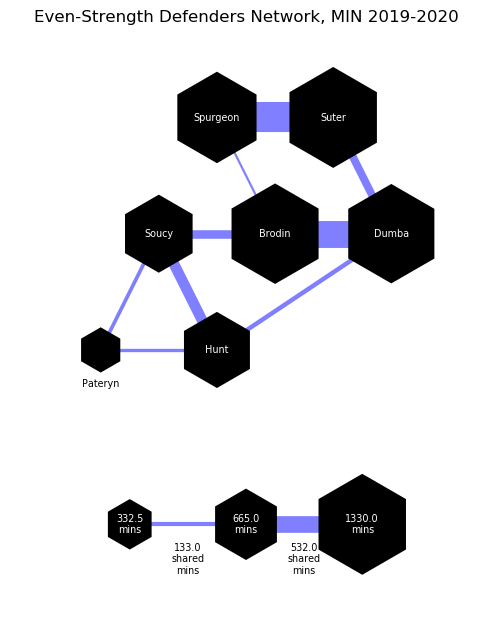

From HockeyViz.com
In terms of where each team allows the most unblocked shots from, Minnesota and Vancouver are essentially polar opposites. The Canucks let more shots toward their netminder than the league average, and are particularly bad at leaking shots from in close – also known as the high-danger scoring areas.
The Wild, on the other hand, allow far fewer unblocked shots overall than the league average, and are extremely proficient at limiting shots in front of their own net and in the slot. True, the Wild do let a ton of shots in from the opposing blueline – which is good news for Edler and Myers, both of whom possess strong point-shots – but that big blue blob in the middle of their chart stands as powerful testament to their general impenetrability.
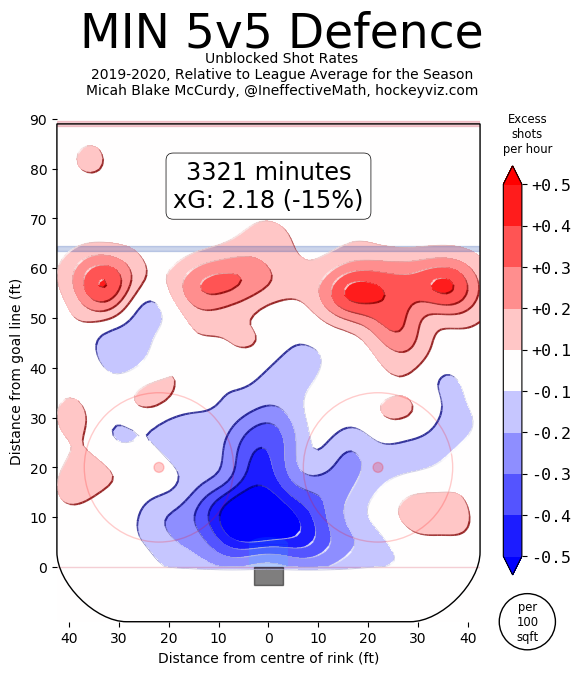
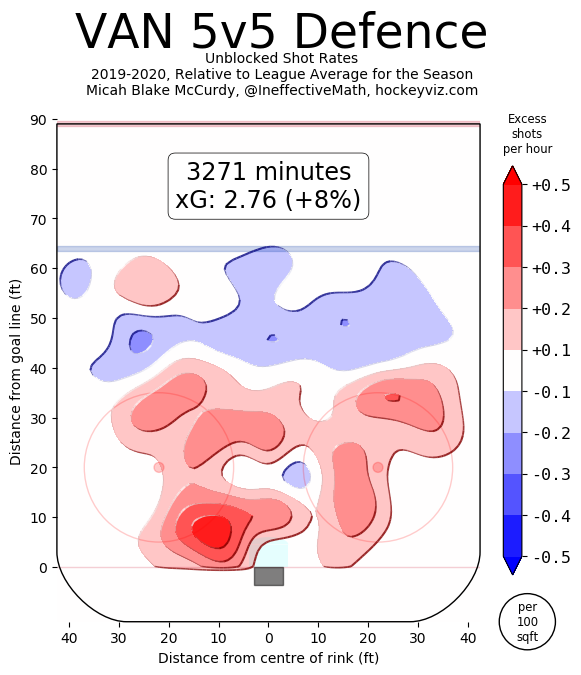
From HockeyViz.com
If there’s a glimmer of hope for Vancouver anywhere, it is on the penalty kill. As they do at even-strength, the Wild do a better-than-average job of limiting shots when shorthanded — but the vast majority of the shot’s they do let in come from the half-wall, better known in Vancouver as Elias Pettersson’s office. Minnesota had better be prepared to readjust their PK pronto, or else they’re going to be staring down the barrel of endless bar-down one-timers all series long.
We shouldn’t note all that without also mentioning that the Vancouver penalty kill lets in more shots than Minnesota from pretty much everywhere — but we digress.

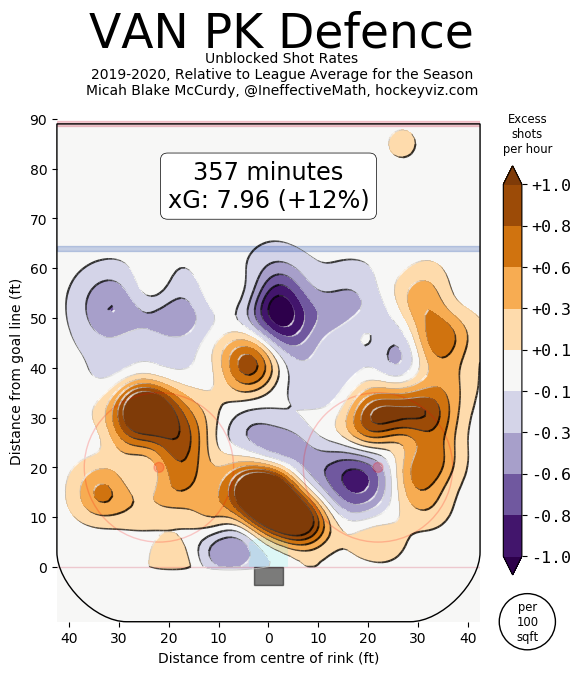
From HockeyViz.com
The blueline has generally been thought of as the weakest component of the Vancouver Canucks roster in 2019/20. Conversely, it’s been the key strength of the Minnesota organization for several seasons running. Perhaps, then, it should come as no surprise that the Wild win the defensive matchup against the Canucks so soundly.
If the Canucks want to pull out a play-in victory against the Wild this summer, they’re going to have to pin their hopes on the other areas of the game.
Recent articles from Stephan Roget

